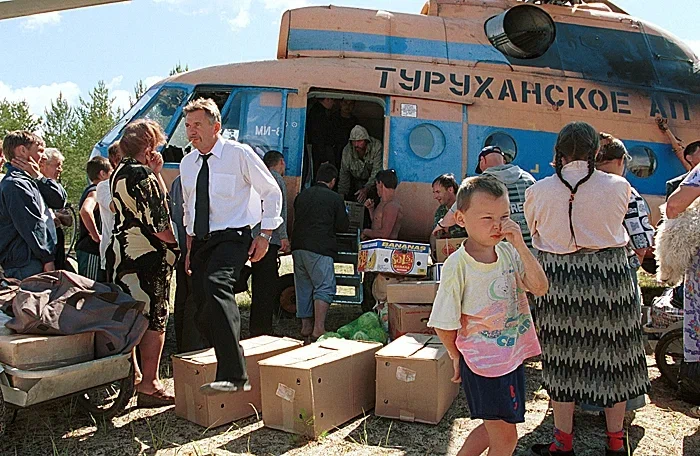|
|
Dr. Kisser
Senior Research Fellow, Arctic Research Center, Museum of Anthropology and Ethnography,
Russian Academy of Sciences
|
The surrounding society and the main economic activity of the region of residence
Fishing, hunting, and gathering are widespread in the Turukhansky region. These types of activities are carried out mainly by the residents of small villages, who sell what they procure to consumer cooperation or at markets. The inhabitants of these villages cultivate agricultural subsidiary plots, breed livestock and grow vegetables. Commercial fish can be caught in sufficient quantities. The Kets catch and sell urbot, perch, dace, sorog, pike, ide, tugun, European carp. Sturgeon, whitefish, nelma, sterlet, taimen, omul, muksun, broad whitefish, lenok, peled, vendace (Turukhan herring) are caught according to annual catch limits. Fur-animal hunting is also widespread; the Kets hunt sable, arctic fox, common fox, squirrel, weasel, ermine, muskrat, wolf and bear.
In Soviet times, in many villages of the Turukhansky district there were numerous state fur farms for breeding silver foxes; today the industry is virtually nonexistent in the district. But the private farming has currently become a lot more developed, with the villagers breeding silver fox and mink.
The Kets also keep a large number of poultry and domestic animals on their subsidiary farms; this also stimulates the trade flow among the small villages of the district and requires the use of delivery services, provided mostly by water transport. In the north of the district, the local indigenous population is actively engaged in reindeer herding.
In the Turukhansky district, 15 out of 28 settlements are inhabited by representatives of indigenous peoples: Kets, Selkup and Evenks (1,555 people in total). The Evenks (170 people) live in the barely habitable zone in the northern part of the district. The Kets (935 people) and the Selkup (444 people) dwell in the no less comfortable central and southern areas. Also, there is a small number of Nenets (4 people) in the district.
The Russian population is (partially) represented by Old Believers who had fled the Soviet power in the 1930s. The largest Old Believer monastery is Chulkovo, which, since the 1990s, has also been attracting Russian Old Believers from Brazil.

Airfield in Turukhansk.
Photo from the archive of Mikhail Prudchenko























































